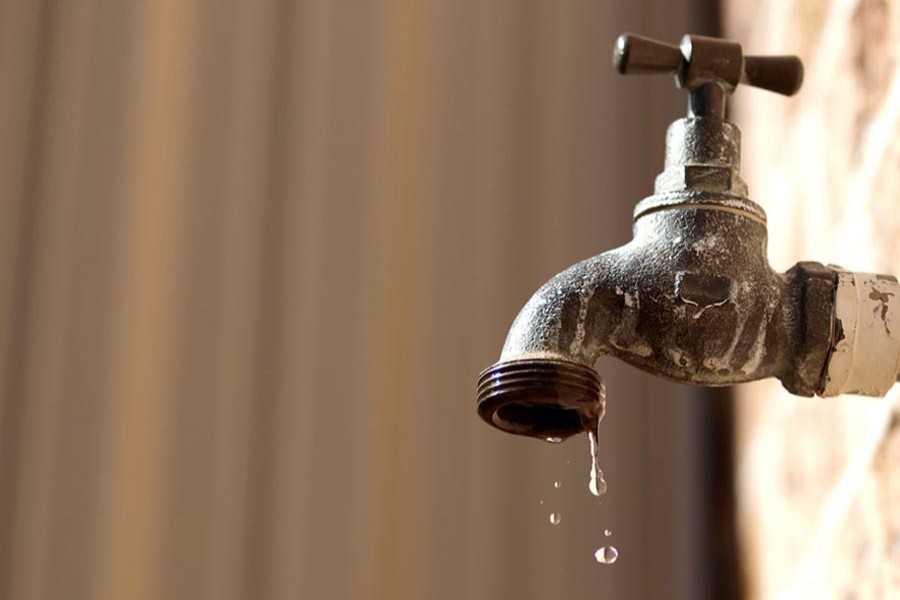The bite of summer continues to get severer with every passing year in the capital. The natural adversity accompanies a lot of public ordeals. Scarcity of safe water is dominant among them. Just two weeks have passed since the start of the first of the 2-month summer --- Chaitra. Already, Dhaka has begun coming up with its usual summer-time spectacles. Of these, the most common one comprises the plastic pitchers, containers, and innumerable types of pots kept in a neat line --- before a public water tap. In another scene, a WASA mobile water tank stands beside a road. Water gushes out from a heavy pipe at its back, with dozens of women, teenagers and a few males jostling to place their containers ahead of each other at the pipe's mouth.
In the past, areas plagued with safe-water crisis were confined to the older part of the city. Over the last two decades, newer places have been added to the hose areas. They include a lot of newly sprung settlements of lower-middle and underprivileged classes on the city peripheries. Isolated pockets in the mid-city locations have also begun emerging. They are afflicted by acute water crisis, or supplies of dirty and stinking water. So, many disgruntled people feel tempted to place Dhaka among the countries perennially suffering from supply shortages of fresh water. According to people living in Dhaka for long, even in the 1960s water scarcity was unknown to the city. Along with the rapid rise in population and the setting up of newer settlements throughout the capital in the 1980s, people began feeling how miserable life could be with household taps releasing just trickles of water. As decades wore on, the problem kept worsening. In the older parts of Dhaka, discoloured water coming from the taps forced the residents to stand in queues to collect pure water from mobile WASA tanks. In vast areas, the water pipes keep going dry for weeks. At the peak of summer, life in these areas would ground to a standstill.
In ensuring adequate supplies of pure water the Dhaka Water Supply and Sewerage Authority (WASA) faces a daunting task, like moving mountains. The gamut of the work is massive and multi-faceted. It begins with a vast gap in water demand and supply. The population of Dhaka metropolitan area is rising appallingly. One-tenth of the country's population and one-third of that in the urban areas live in Dhaka. In order to cater to the water needs of these people, Dhaka WASA is compelled to turn to ground water, which comes to 78 per cent of its total output. Notwithstanding WASA's five water treatment plants, the authorities have to turn, finally, to the once abundant groundwater. Of late it has witnessed an alarming level of depletion, which is feared to result in land subsistence. That unplanned residential and infrastructural construction on this fragile layer of soil makes the city vulnerable to earthquakes is a dreaded consequence.
Town planners believe this turn of things could be reversed. According to them, despite Dhaka being part of the fresh-water-scarce world, equitable distribution of water could herald a comfortable change. In this task, the discrimination in per capita water share among the formal (upscale areas) and informal (slum areas) households should be narrowed down drastically. Moreover, an overhaul of the long worn-out underground pipelines has been long overdue.


